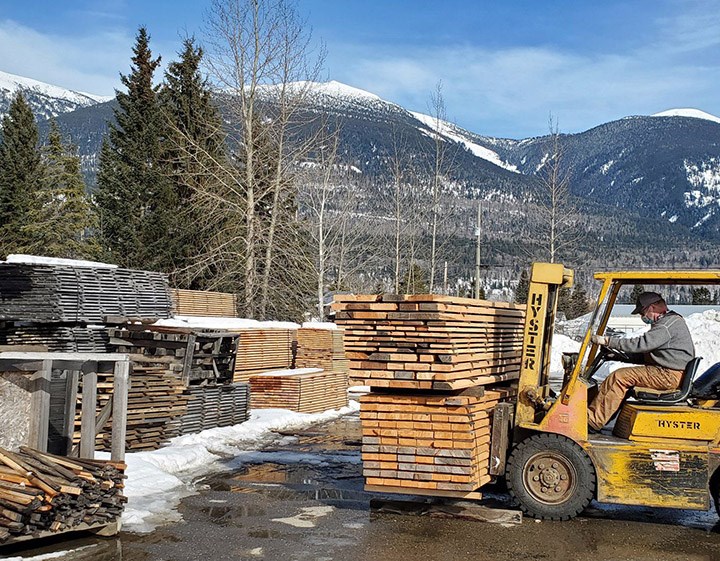Recently announced funding from the Province will help one Robson Valley community forest ramp up production of specialty products, extract more value from each log, and reduce the raw material sent out of the region to mills.
“Our mandate is to be a part of developing the economy in our region,” said Dunster Community Forest manager Ray Thiessen. “Selling raw logs down the highway to Prince George or Kamloops or whatever, that's a limited value to our local economy.”
Formed 16 years ago by local residents concerned about the effects of logging on nearby watersheds and habitat, Dunster Community Forest Society purchased a wood manufacturing facility in 2019 with the philosophy of creating value-added products from sustainable forestry.
An $88,000 grant, part of the economic recovery infrastructure program to support economic resilience, tourism, heritage, and economic development, will expand the society’s wood manufacturing operation, to include a protected storage area. Additional storage will enable BRKH Custom Woodworking to produce more, higher-value products, a shorter haul from where they were sourced.
“The forestry operation is barely economically viable as it is; we need to get more revenue from the would-be log than we do now just selling it to mills,” said Dunster Community Forest chair Larry Stamm.
Currently, about 10 per cent of logs cut by the community forest are run through BRKH to make value-added products. The remaining logs are sold to pulp and saw mills. The storage upgrade will help the organization use about 20 per cent of its logs for value-added products, estimated Stamm.
BRKH buys about 2,000 cubic metres annually from private companies, and the Dunster and McBride community forests. It mainly processes cedar, pine, Douglas fir, and birch to make hardwood and softwood flooring, tongue and groove paneling, decking, cedar decking, custom furniture and feature walls. The manufacturer supplies customers in the valley and beyond, including Jasper, Edmonton and Prince George.
“We are setting ourselves up to be a supplier of value-added material within the region,” Thiessen said. “We're providing material that is not common in the marketplace and is hard to find.”
Cedar and edge grain products are among the most popular because many smaller builders don’t have the means to manufacture them, said Thiessen.
To build up inventory for sales, the operation needs a place to store more product, Stamm said. “The only capacity right now we have to store kiln dried lumber or finished product is in the way of actually doing stuff. It's in the way of our machinery.”
When constructed, the new storage facility will be half insulated and heated, and half an open pole shed to keep rain and snow out. Currently, raw material is stacked outside, exposed to the elements, or crowded into the production facility.
The additional storage will help cut kiln drying time by up to 60 per cent, enabling more material to be dried faster.
“It (will) allow us to produce material and have it in inventory in a temperature-controlled, moisture-controlled environment that is suitable for installation right away,” said Thiessen.
Having more high end, high return products on hand will increase sales and decrease turnaround times for customers from a month to two weeks or less, estimated Thiessen. “This is a huge difference in that business. People want things when they want them.”
The capacity upgrade dovetails with a nearly-complete inventory of the community forest timber land base which is expected to lead to a reduction of its annual allowable cut from 15,000 cubic metres to around 10,000 or so, Stamm said.
Dunster Community Forest holds tenure on about 20,000 hectares, with only about 7,000 hectares operable for timber harvesting.
“The community forest operates, or tries to operate, on a more ecological basis,” said Stamm. “We realized we had to reduce what we were cutting for green timber and the inventory will give us the numbers.”
Once the inventory results are known, the organization will consider a range of harvesting scenarios.
“How much we can cut now, versus later in the future,” said Stamm. “We could have the option of cutting more for five or 10 years, and then drastically cutting back, or cutting less now and being able to keep that going for indefinitely.”
The whole idea is to gain greater value from less and less material, said Thiessen. “The greater value we can get from each piece, the more options we have for forest management, so they're tied together completely.”
Our forests are finite, said Thiessen. “Cutting less wood and getting more value out of it, this is better for forests.”



